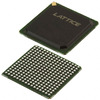Manufacturer Part Number
LC5512MV-45FN256C
Manufacturer
lattice-semiconductor
Introduction
The LC5512MV-45FN256C is part of Lattice Semiconductor's ispXPLD® 5000MV series, positioned as a high-performance embedded CPLD.
Product Features and Performance
In System Programmable, allowing for flexible design modifications
High speed with a maximum delay time of 4.5 ns
Supports a voltage supply range from 3V to 3.6V
Features 16 logic elements/blocks
Contains 512 macrocells for complex logic operations
Offers 193 I/O pins for extensive connectivity
Designed for operating temperatures between 0°C and 90°C
Surface mount technology for secure and compact installation
Encased in a 256-BGA package for robust integration
Product Advantages
Flexibility in programming and reprogramming directly in the system
Fast operation speeds suitable for demanding applications
Adequate logic and macrocell capacity for complex logic designs
Versatile I/O count catering to comprehensive project requirements
High thermal tolerance ensuring reliability in varied environments
Key Technical Parameters
Delay Time tpd(1) Max: 4.5 ns
Voltage Supply Internal: 3V ~ 3.6V
Number of Logic Elements/Blocks: 16
Number of Macrocells: 512
Number of I/O: 193
Operating Temperature: 0°C ~ 90°C (TJ)
Mounting Type: Surface Mount
Package/Case: 256-BGA
Supplier Device Package: 256-FPBGA (17x17)
Quality and Safety Features
Complies with industry standards for quality and reliability
Thermal and voltage parameters designed for safe operation within specified limits
Compatibility
Compatible with a broad range of standard design and development tools from Lattice Semiconductor
Application Areas
Ideal for complex logic operations in telecommunications, computing, industrial, and automotive sectors among others
Product Lifecycle
Classified as Obsolete, indicating it is nearing the end of its production cycle
Users should look for replacements or upgrades for future projects
Several Key Reasons to Choose This Product
High-speed performance for time-sensitive applications
In-system programmability reduces development time and cost
Adequate for complex designs with its significant logic and I/O capacity
Suitable for robust operation in diverse environmental conditions
Though obsolete, provides a benchmark for evaluating newer models or replacements in terms of performance and capacity



 LC5512MV-75F484CLattice Semiconductor CorporationIC CPLD 512MC 7.5NS 484FPBGA
LC5512MV-75F484CLattice Semiconductor CorporationIC CPLD 512MC 7.5NS 484FPBGA LC5512MC-75F256CLattice Semiconductor CorporationIC CPLD 512MC 7.5NS 256FPBGA
LC5512MC-75F256CLattice Semiconductor CorporationIC CPLD 512MC 7.5NS 256FPBGA LC5512MV-45Q208C
LC5512MV-45Q208C